Leg Press Form
Do you use the leg press machine? The leg press is one of the most popular machines in the gym. But if it's not available, we will show you some alternatives to the leg press. We'll even teach you proper foot placement so you can recruit the right muscles. And of course, everyone wants to know if they're actually lifting all that weight. Keep reading to learn more leg press tips and errors.

Joint Actions
The two main joint actions of the leg press are hip extension and knee extension. When you perform hip extension, you are working out your gluteus maximus and your hamstring muscles. When you perform knee extension, the primary movers are the quadricep muscles. So if you position your feet in the center position (more on this later), you will work out your glutes, quads, and hams.
If you would like to learn more about hip extension, including more exercise demos, click the image below.
Along with hip extension and knee extension, you can also add a little planar flexion, or a lot of plantar flexion. Plantar flexion is the joint action for calf raises. More on that later. In the meantime, keep reading to learn more about leg press, squats, muscles, and more.
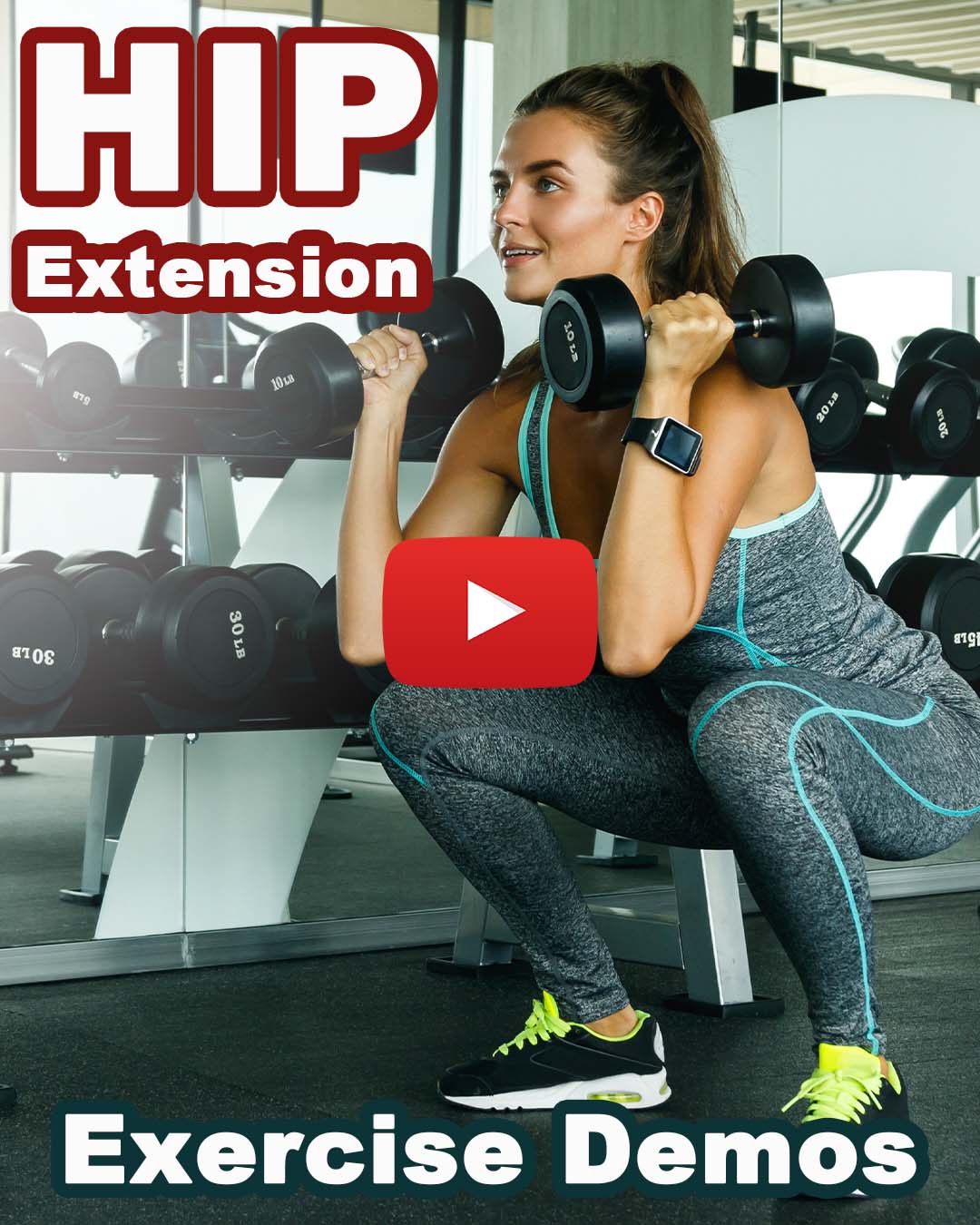
Muscles
As you could have probably have guessed, the leg press machine is great for lower body muscles. Just a normal leg press setup is going to target the gluteus maximus, the quads, and the hamstring muscles. If you use the leg press machine as a calf press, then you can also add gastrocs and soleus to the list of activated muscles. If you place your feet out wide (more on this later), you will also include your adductor muscles.
Furthermore, I would suggest performing a set of leg presses, immediately followed by a set of calf presses. Catch your breath for 45 to 60 seconds, and repeat for 3 to 4 sets. Curious about how much you should rest between sets? Click the image below to learn more about rest time between sets.
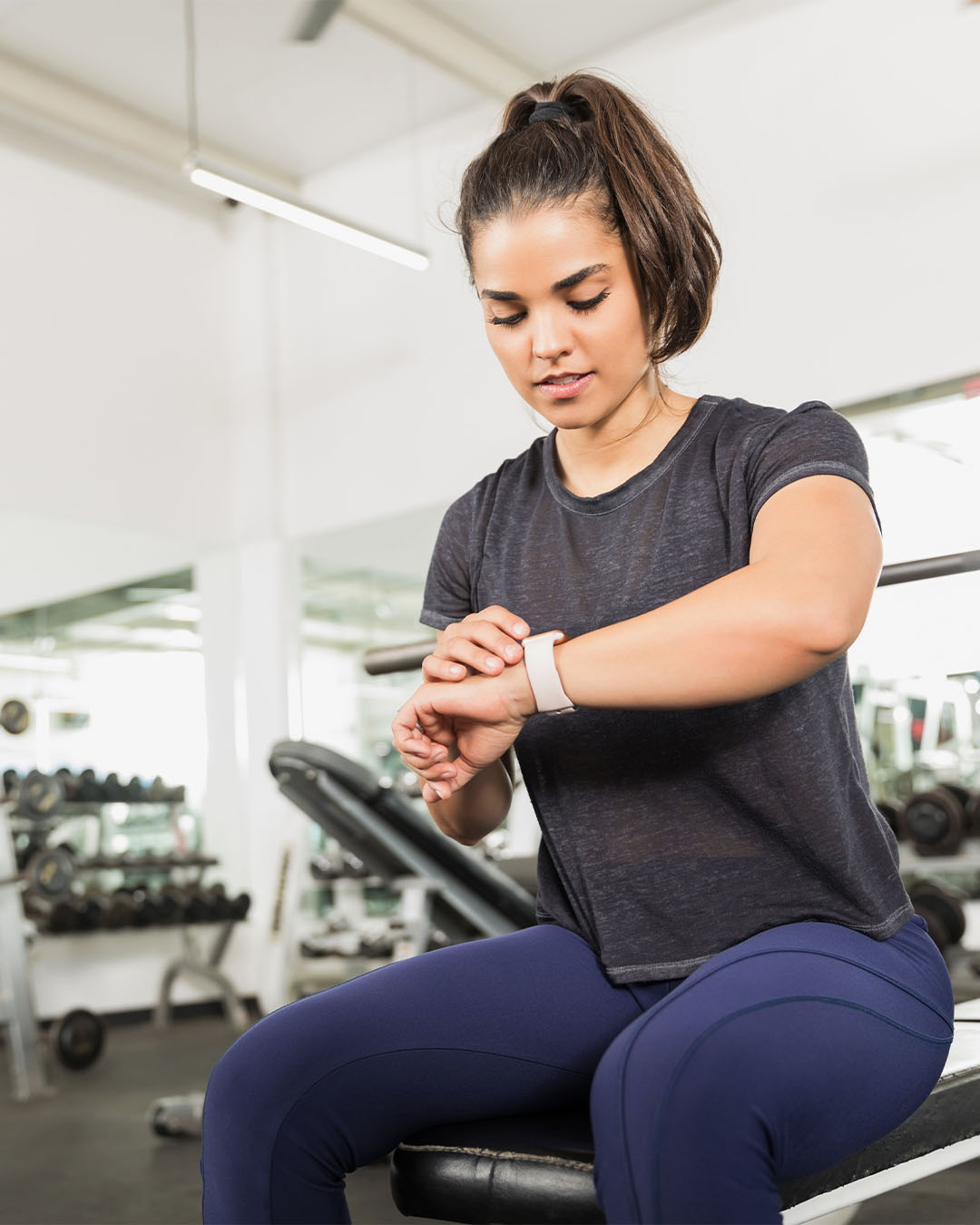
Alternative Exercises
Don't have access to a leg press machine? The hip extension video above will give you 5 other exercises you can perform to work your glutes, hams, and quads. I personally like barbell squats and deadlifts as good alternatives to leg press. In fact, barbell squats may still be the best exercise you can do at the gym. Squats will work more stabilizer muscles than the leg press because you have to balance the resistance. In addition, if done properly, you'll also have a greater range of motion. Want to learn more about barbell squats? Click the image below to learn more about barbell back squats.

Leg Press vs Squats
The leg press machine is a very stable, therefore, your primary movers will do most of the work, and your stabilization muscles won't have to do as much. If you're looking for strength and hypertrophy, the leg press machine, like a lot of machines, will accomplish that goal. You can really load up on the weights and not have to worry about balance. You will not expend any energy stabilizing the weight so all your energy can be used to move the weight. Not having to worry about stabilization makes it a perfect exercise for beginners as well.
On the other hand, barbell squats require more stabilization and may also require a broader range of motion. You can definitely feel the difference when you execute a set of squats close to failure. However, both exercises have their benefits, and I like to include both exercises in my workout routine.
If you want to learn more about exercise science and sports nutrition, click the image below to review our personal trainer classes.
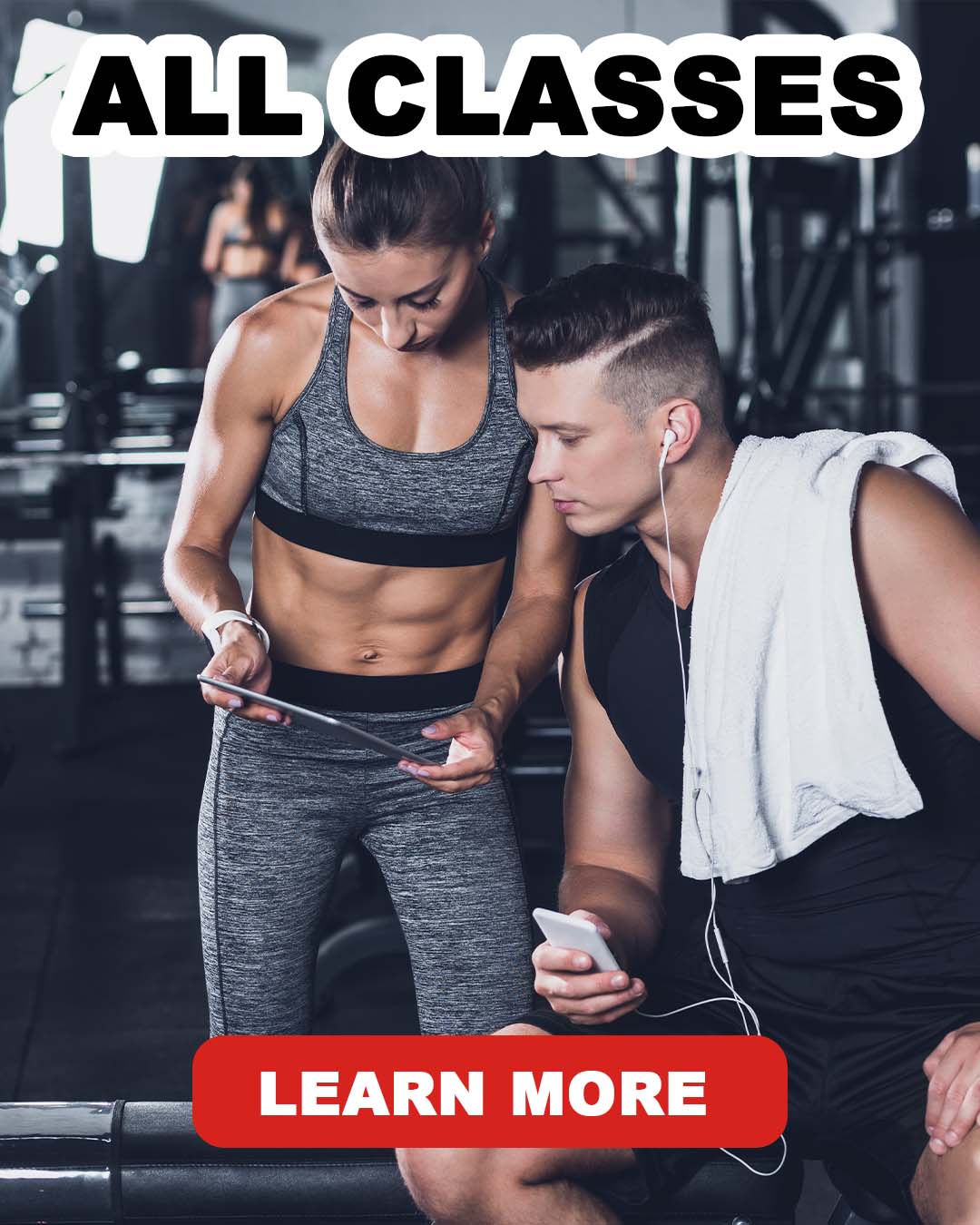
Leg Press Errors
The leg press is a very safe and effective machine if used properly. First, you need to set up correctly. As with almost all exercises, you always want to create a neutral spine. Never put an undue amount of stress on your lumbar. Your low back position is very important and your lumbar should always be pressed against the back pad on the leg press machine.
As you lower the weight, be mindful of your low back. If you feel your low back coming off the pad, you've gone far enough. Also, keep a slow tempo because if you lower the weight with too much momentum, your low back may come off the pad inadvertently.
The second thing to be mindful of are your knees. Make sure your knees are not caving in, or bowing out, while you are lowering the weight. Again, if your knees start to move in or out, you have gone far enough. After a while, your legs may get used to the movement and start to align properly. The leg press exercise is a great exercise machine, but don't forget proper technique when choosing heavy weights.
If you need help with leg press, other exercises, or a meal plan, click the image below to contact a PFTA certified personal trainer.
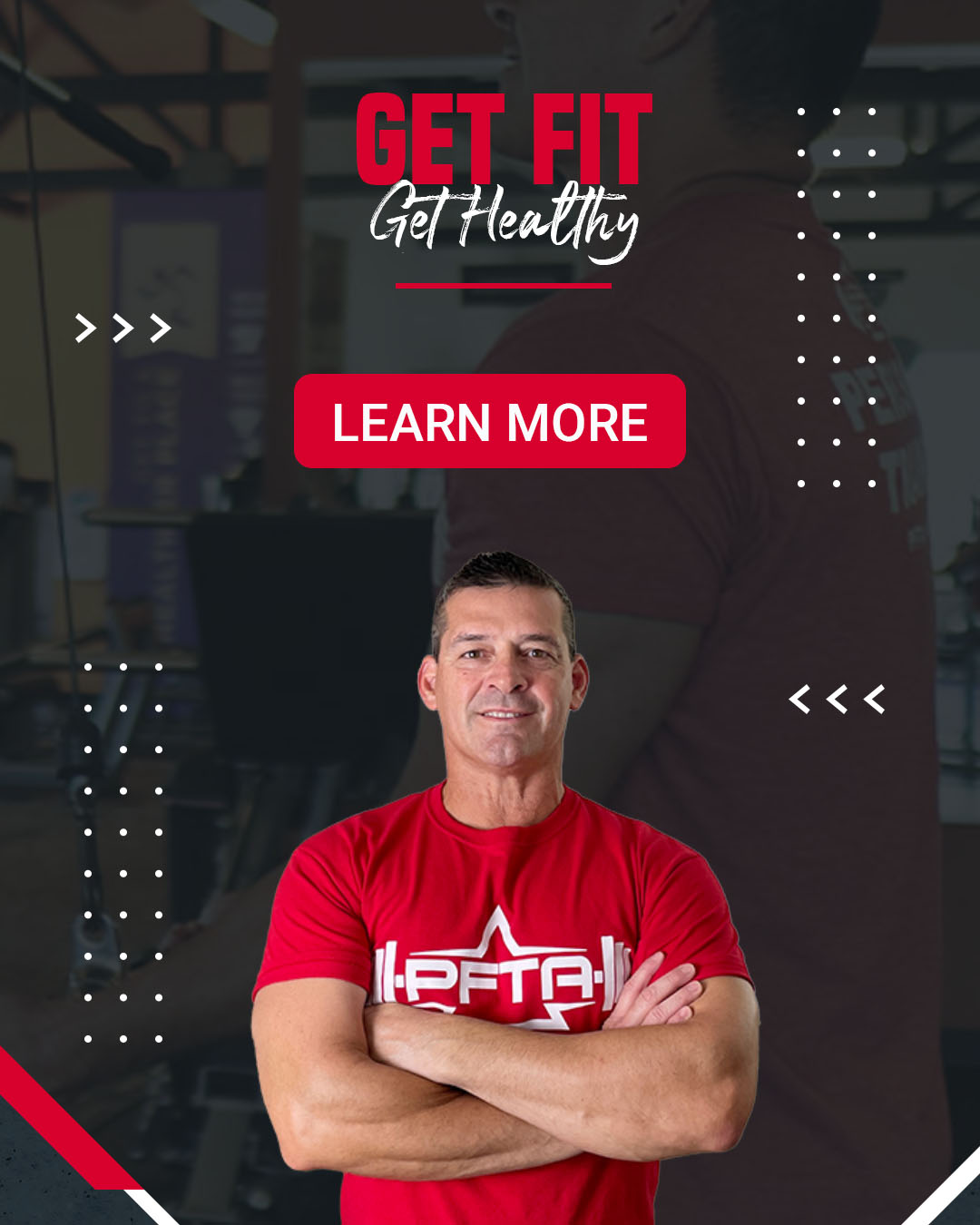
Leg Press Variations
There are several variations to remember while performing the leg press exercise. We cover these variations in the hip extension video above. Foot placement will dictate which muscles of the leg will be emphasized. Normally, you will want to place your feet right in the middle of the plate to recruit all of your leg muscles equally. Center foot placement is also great for beginners.
On the other hand, sometimes you'll want to emphasize one group of muscles more than the others. Placing your feet higher on the plate will allow you to recruit more glutes and hams. On the contrary, placing your feet lower on the plate will allow you to recruit more quads. Moreover, if you want to recruit more adductor muscles, then you will want to place your feet wide on the plate. Try all 4 positions in one day or on different days. Make notes, rest, recover, and repeat.
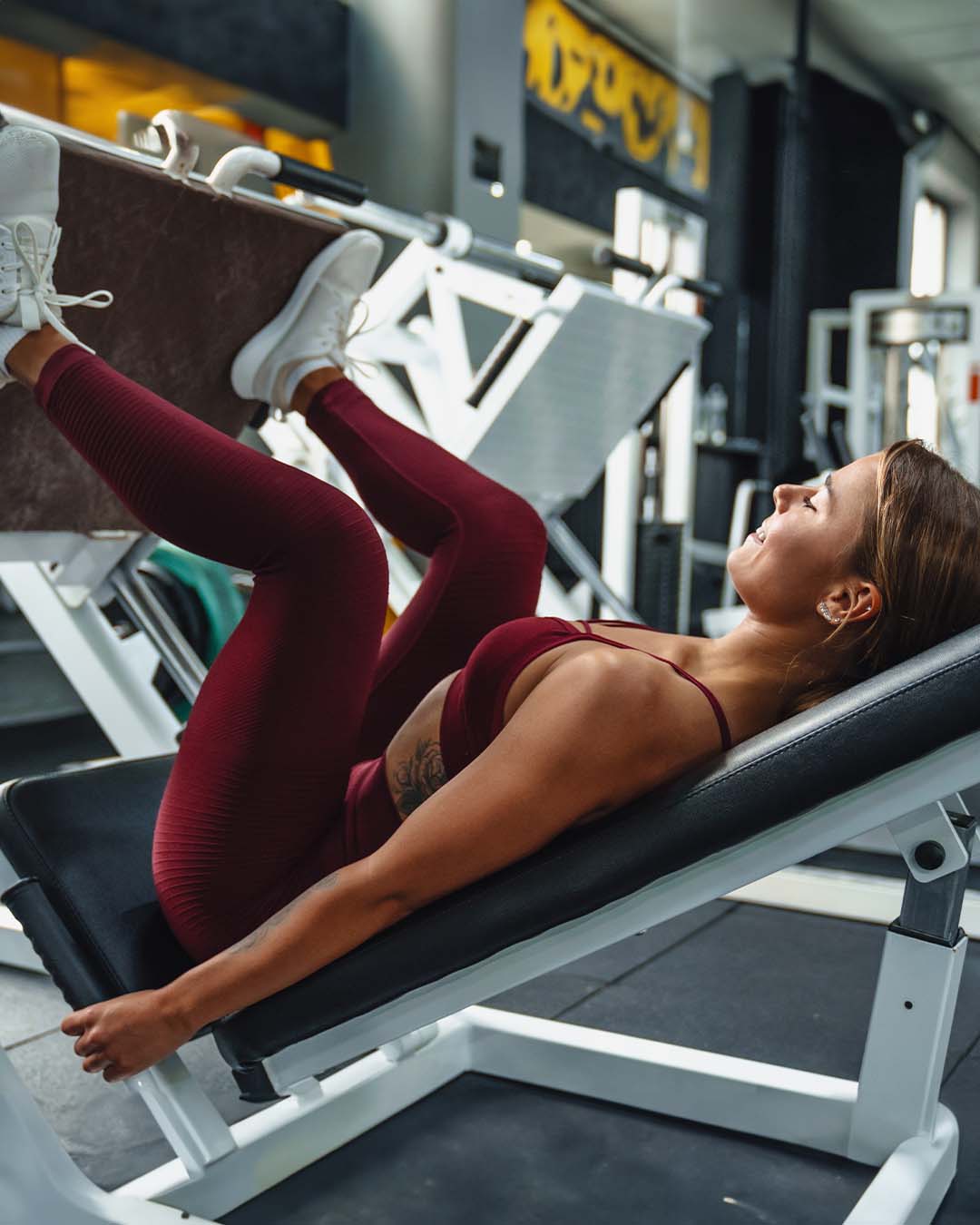
Am I Really Lifting That Much?
The short answer is no. It may look impressive to load a bunch of plates on the leg press machine, but the sled is angled. Since you are lowering and lifting the weight at an angle, you are only lifting a fraction of the weight. If you were lifting the weight straight up and down, then the weights would add up correctly. That's one reason you can squat as much as you can leg press.
Another reason is the stabilizer muscles previously mentioned. When you exert energy to balance a weight, you can't use as much energy to lift. And a third reason is the range of motion. Next time you do the leg press, watch how much the weight actually moves. It's probably only half the distance that the weight moves when you squat.
But, as I said above, both exercises have a place in your workout routine. As long as your making progress, it doesn't matter which exercise is your favorite.
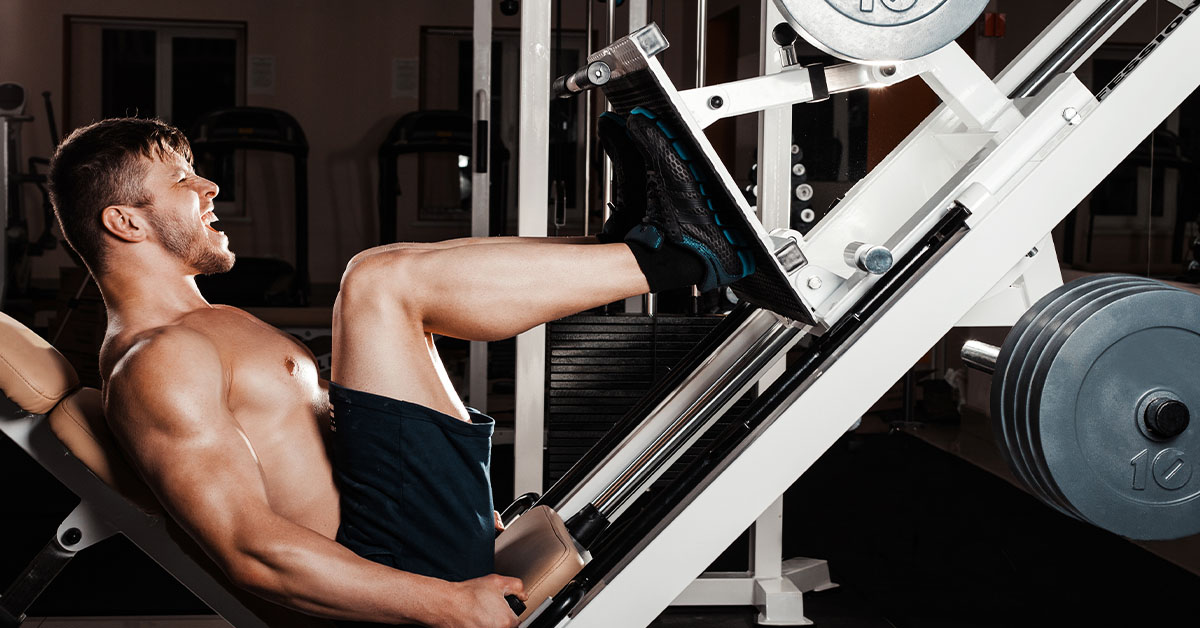
Knowledge is Power
And if you want more tips on exercise and nutrition, add your email below. You'll receive weekly tips directly to your inbox. Plus, you'll also receive the occasional coupon code for our classes.
Summary
The leg press machine is a great tool for your glutes, quads, hams, adductors, and calves! The most important thing to remember is your technique and your tempo. You never want to compromise your low back or your knees. Keep your low back pressed against the pad and keep your knees in line with your hips and feet. Tempo is just as important so that momentum doesn't compromise your form. Happy health and happy training!
Written By
RAescobar, PFTA instructor and personal trainer